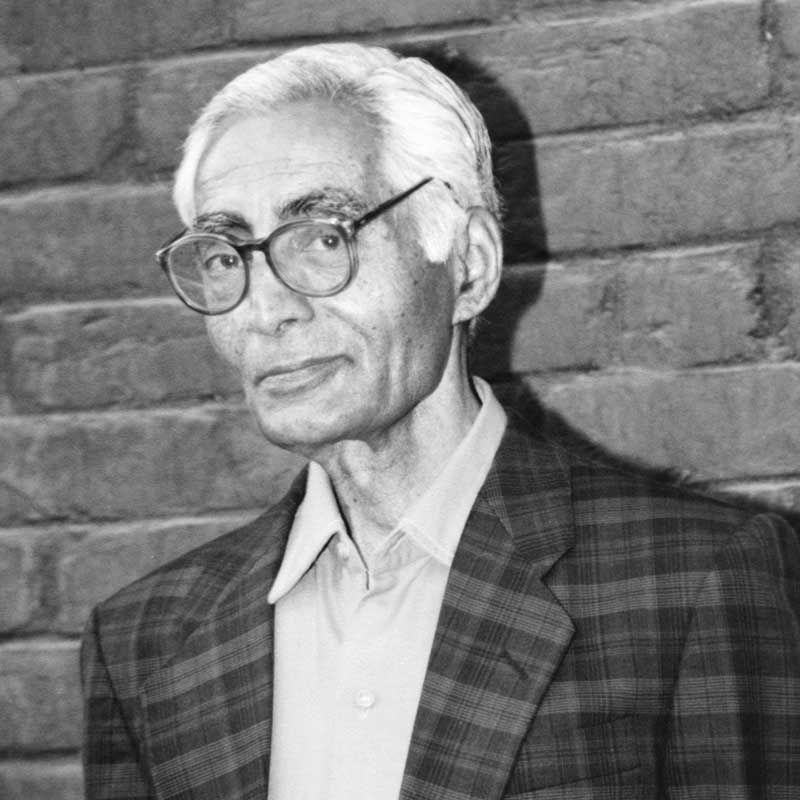
Ram Kumar was born in 1924 in Shimla, Himachal Pradesh. While pursuing a M.A. in Economics from St. Stephen’s College, Delhi, he chanced upon an art exhibition in 1945. “I saw paintings like that for the first time and it made me so intrigued that I returned several times”.
Ram Kumar took classes at the Sharda Ukil School of Art under Sailoz Mukherjee and gave up employment at a bank in 1948 to pursue art. Sailoz Mukherjee introduced him to still life painting with live models. While a student there, he met Raza at an exhibition. Raza and Ram became good friends. He convinced his father to pay for a one-way ticket to Paris and studied further there under Andre Lhote and Fernand Léger.
Ram Kumar has been one of the first Indian artists to give up figurativism for abstract art. He was associated with the Progressive artist’s group along with Husain, Raza, Ara, Souza amongst others.
He has participated in various exhibitions in and out of India, including the 1958 Venice Biennale and the Festival of India shows in the then USSR and Japan in 1987 and 1988. One of Ram Kumar’s latest solo exhibitions was in 2008 in Delhi. Ram Kumar also writes in Hindi and eight collections of his works have been published, as well as two novels and a travelogue.
The human condition is the main concern of the painter manifested in his early works by the alienated individual within the city. Later the city, specifically Varanasi with its dilapidated, crammed houses, conveys a sense of hopelessness. Increasingly abstract works done in sweeping strokes of paint evoke both exultation of natural spaces and more recently an incipient violence within human habitation.
Ram Kumar received the Padma Shri in 1972 and the Padma Bhushan, India’s third highest civilian honour in 2010. He passed away in 2018.